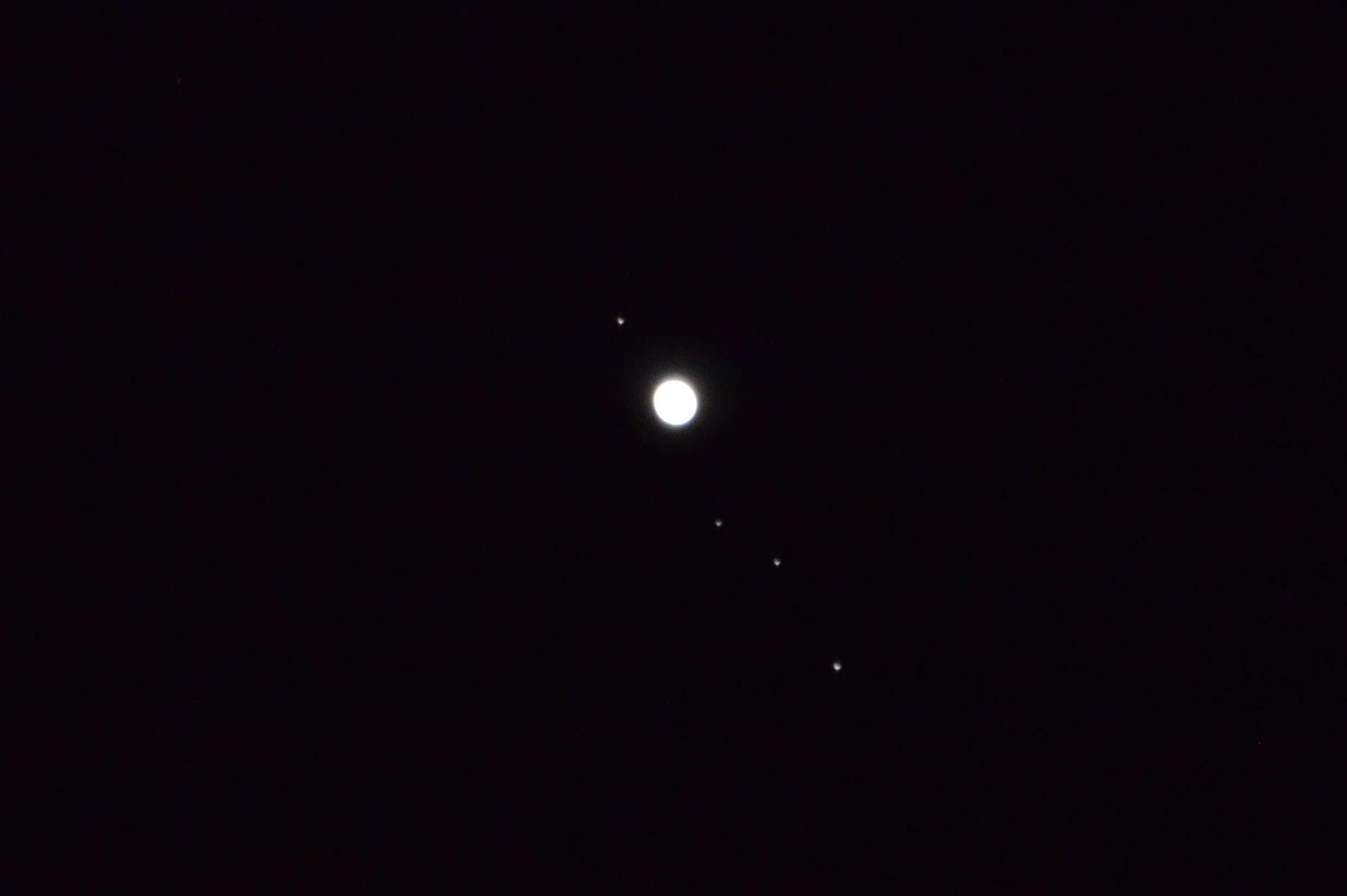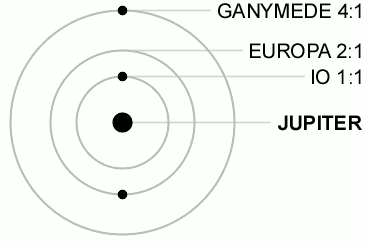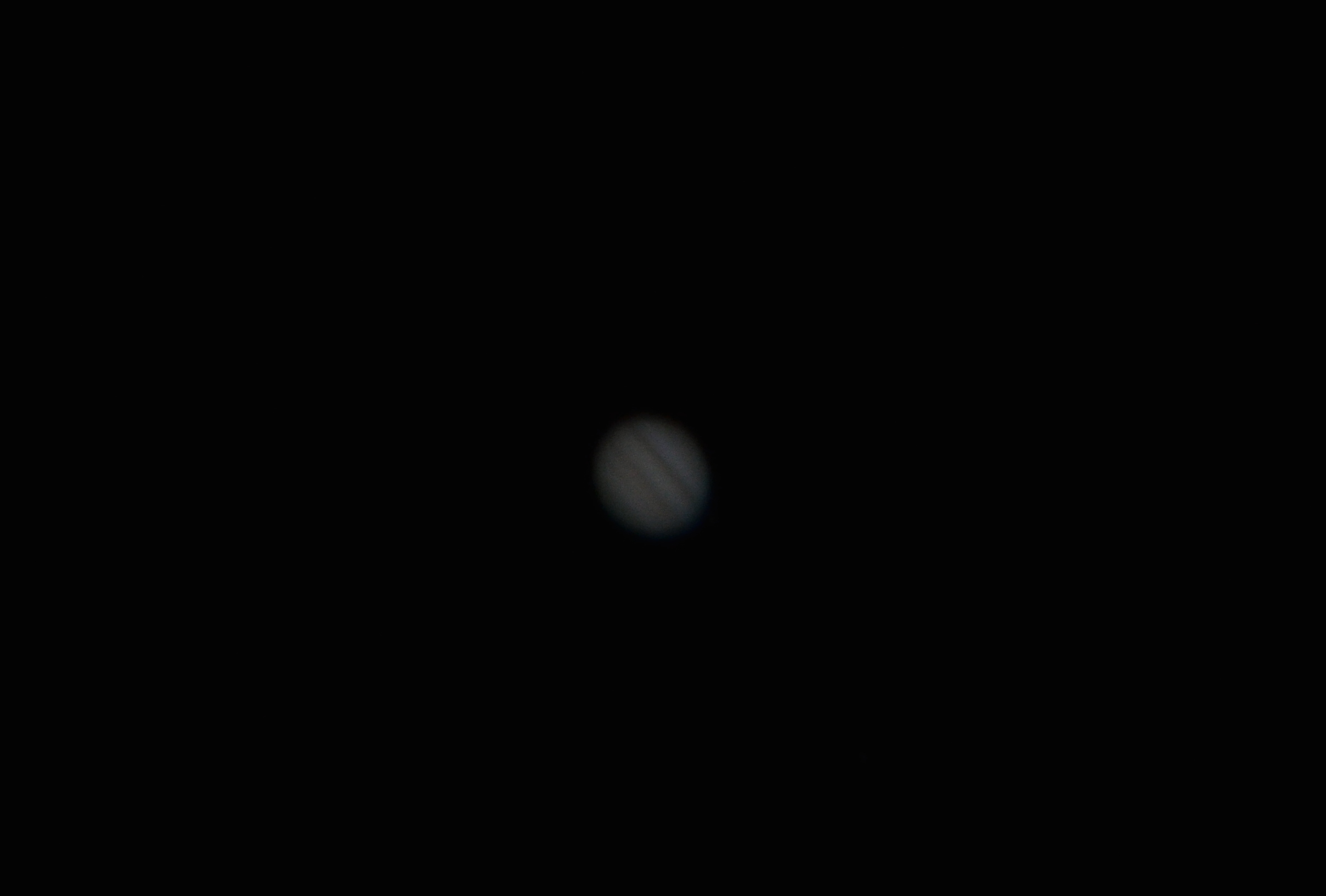You can see my previous post on the Moon for my telescope setup. In this post I'll show some photos I took of Jupiter.
The Moon is roughly 400,000 km from the Earth, while Jupiter is almost 600,000,000 km away. So Jupiter is about 1500 times farther than the Moon. Jupiter, however, is about 40 times larger in diameter than the Moon so it still takes up a reasonably large portion of the sky for us to see. (In contrast, the Earth's diameter is about 4 times as large as the Moon's)
Galilean Moons
One really cool thing about looking at Jupiter is that you can actually see the four of Jupiter's moons! Also known as the Galilean moons these four moons of Jupiter were first discovered by Galileo Galilei in 1610. They are named after the lovers of Zeus - Io, Europa, Ganymede, and Callisto.
Here is one of my first few shots, taken on Nov 1, 2012:

The moons actually spin fairly fast around Jupiter, and just two nights later I saw a different configuration:

The Galilean moons rotate much faster around Jupiter than the Moon rotates around the Earth. The inner most Io has the fatest revolution of 1.7 days, with Europa's 3.5 days, Ganymede's 7.5 days and Callisto's 16.7 days.

Jupiter
You can actually see Jupiter with the naked eye in the sky. You just won't be able to see the moons or any structure on Jupiter's surface. Jupiter would appear to be a very bright star, but a planet does not twinkle like a star does, and therefore you can figure out whether what you are looking at is a planet like Jupiter or a star.
Unfortunately I was not able to capture the colors through my camera (I could actually see fuller colors with with the naked eye through the telescope), but you can still clearly make out the bands of this gas giant.

It is truely amazing to see Jupiter through the telescope.
Happy skygazing!